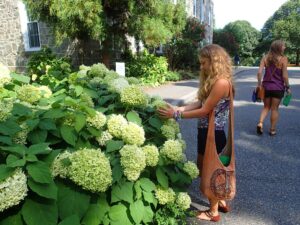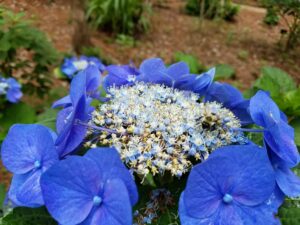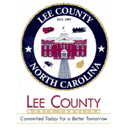A Hydrangea by Any Other Name
go.ncsu.edu/readext?951690
en Español / em Português
El inglés es el idioma de control de esta página. En la medida en que haya algún conflicto entre la traducción al inglés y la traducción, el inglés prevalece.
Al hacer clic en el enlace de traducción se activa un servicio de traducción gratuito para convertir la página al español. Al igual que con cualquier traducción por Internet, la conversión no es sensible al contexto y puede que no traduzca el texto en su significado original. NC State Extension no garantiza la exactitud del texto traducido. Por favor, tenga en cuenta que algunas aplicaciones y/o servicios pueden no funcionar como se espera cuando se traducen.
Português
Inglês é o idioma de controle desta página. Na medida que haja algum conflito entre o texto original em Inglês e a tradução, o Inglês prevalece.
Ao clicar no link de tradução, um serviço gratuito de tradução será ativado para converter a página para o Português. Como em qualquer tradução pela internet, a conversão não é sensivel ao contexto e pode não ocorrer a tradução para o significado orginal. O serviço de Extensão da Carolina do Norte (NC State Extension) não garante a exatidão do texto traduzido. Por favor, observe que algumas funções ou serviços podem não funcionar como esperado após a tradução.
English
English is the controlling language of this page. To the extent there is any conflict between the English text and the translation, English controls.
Clicking on the translation link activates a free translation service to convert the page to Spanish. As with any Internet translation, the conversion is not context-sensitive and may not translate the text to its original meaning. NC State Extension does not guarantee the accuracy of the translated text. Please note that some applications and/or services may not function as expected when translated.
Collapse ▲Hydrangeas are staple companions in the Southern garden. Books, articles, and poems have been written in ode to these graceful plants that bring presence and stature to even the most challenging corner. Breeding companies have been developing more and more cultivars (i.e. “cultivated varieties”) in search for the “perfect” hydrangea, and they have really gotten close to perfection on more than a few of them. I was sitting in a symposium recently and a breeder friend of mine introduced his new bright magenta lacecap hydrangea with dark, dark purple-green foliage. The room full of plant nerds gasped and “ooh”ed in delight. And then he addressed the hydrangea-equivalent of the elephant in the room: the horticulture market still thinks the mophead hydrangea is superior to the lacecap hydrangea.
“Mophead” versus “Lacecap”
What do we mean when we say “mophead” and “lacecap”? In this rare instance, horticulturists are trying to use common words to describe a plant! Most folks are always thinking about the species Hydrangea macrophylla when they think of hydrangeas, but there are so many more and much more diversity.
The mophead hydrangeas are characterized by a plethora of sterile “flowers”, which are botanically bracts, that are arranged in a rounded mound, an upright cone or trailing cluster. The name is more indicative of a hairstyle than a mop! Sometimes there are fertile flowers within the cluster of sterile ones, but sometimes humans have selected for a completely sterile panicle. These are also the favorites for their chameleon-like performance under different soil pH levels (i.e. pink means alkaline soils and blue means acidic soil). There are a few species known for this type of flower: Hydrangea paniculata (Native to Asia), Hydrangea quercifolia (Native to North America), Hydrangea macrophylla* (Native to Asia) and Hydrangea arboresences (Native to North America).

Mophead Hydrangea_photo by Amanda Wilkins
The lacecaps, by contrast, look as if the inflorescence (i.e. “cluster of floral parts) is a delicate patch of intricate lace surrounded by a circlet of sterile bracts. The “lace” is really hundreds of tiny fertile flowers and the bracts are the billboard signs for the pollinators to let them know there is nectar and pollen to be had. There are several species with lacecap inflorescences: Hydrangea macrophylla* (Native to Asia), Hydrangea radiata (Native to the Appalachian Mountains), Hydrangea aspera (Native to Asia), and Hydrangea involucrata (Native to Asia).
A Case for the Lacecap
I argue that the lacecap hydrangeas are just as, if not more so, beneficial to your garden as mophead types. The presentation and presence of the fertile flowers like those in the lacecap make them better pollinator-supporting plants than the mopheads. Many mopheads have no nectar or pollen resources, which are what pollinating insects are looking for. The way the fertile flowers, where the nectar and pollen are, are flat and easier to get to also serves a greater diversity of pollinating insects.

Lacecap_Mobile AL – Photo by Amanda Wilkins
Beyond the resources for wildlife, the graceful, fine texture of the lacecaps is beautiful in the landscape in a way a big, dense ball of flowers isn’t. Many of the lacecap species and varieties have multiple colors within their inflorescences and provide a different color effect than bold tone of the mopheads.
Human History of Plant Breeding
Humans have been selecting hydrangeas for the garden for thousands of years. Gardeners in Japan and China have been enjoying these plants as part of their plant palette and Westerners were quick to recognize the beauty of these incredible plants in the last few centuries. From those earlier shrubs, there are now modern cultivars with larger inflorescences, more striking colors and constitutions that can handle the myriad of growing conditions in our modern world. Most of the major shrubs breeding companies have a Hydrangea breeding program, and they’re always looking for the next best thing. Just go to your local retail nursery. Millions of dollars each year alone are spent on Hydrangeas and the modern companies know it. The humble lacecap is overdue for more garden love.
Amanda Wilkins is the Horticulture Agent for North Carolina Cooperative Extension in Lee County.
Resources
NC State Plant Toolbox for Hydrangea
JC Raulston Arboretum for Hydrangeas




